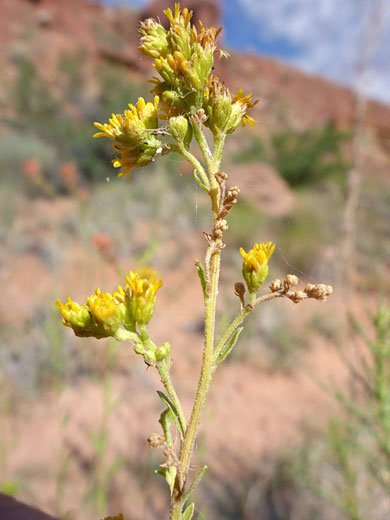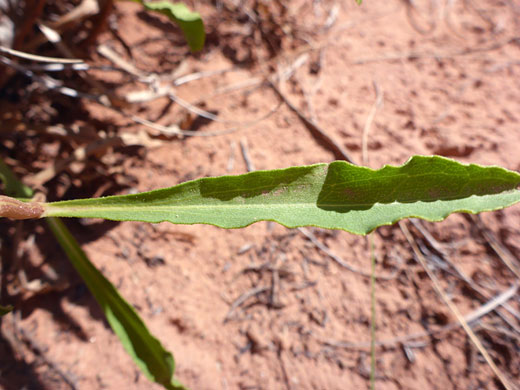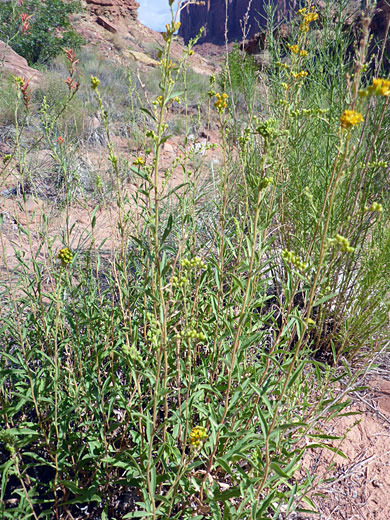
Yellow florets and phyllaries of isocoma rusbyi, along the Syncline Loop Trail, Canyonlands National Park, Utah
Common name:
Rusby's jimmyweed
Family:
Scientific name:
Isocoma rusbyi
Synonym:
Haplopappus rusbyi
Main flower color:
Range:
North Arizona and the Four Corners area
Height:
Up to 4 feet
Habitat:
Scrubland, semi-deserts, dry washes, roadsides; often sandy or saline locations, from 2,300 to 5,000 feet
Leaves:
Alternate, sessile, narrowly oblong to obovate, up to 2 inches long, with entire edges
Season:
August to October
Leaves of isocoma rusbyi are narrow, generally widest in the middle or slightly above. Edges are not toothed but may be somewhat wavy. Leaves have a light-colored midvein and a pair of parallel side veins. Leaves and stems are hairless. Plants often form thick clumps, with dozens of stems growing close together. Stems are reddish brown towards the base.
Flowerheads are produced in small, compact clusters at the top of the stem. The involucre is ringed by between 15 and 25 differently-sized phyllaries, in several rows. Phyllaries have a faint midvein, are sometimes glandular (as are the leaves), and may be either glabrous or lightly hairy. The yellow disc florets number between 19 and 25, and their corollas are about a quarter of an inch long at maturity.
Flowerheads are produced in small, compact clusters at the top of the stem. The involucre is ringed by between 15 and 25 differently-sized phyllaries, in several rows. Phyllaries have a faint midvein, are sometimes glandular (as are the leaves), and may be either glabrous or lightly hairy. The yellow disc florets number between 19 and 25, and their corollas are about a quarter of an inch long at maturity.
All Contents © Copyright The American Southwest | Comments and Questions | Contribute | Site Map



